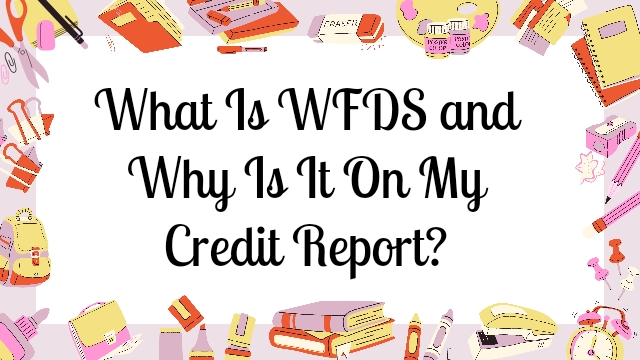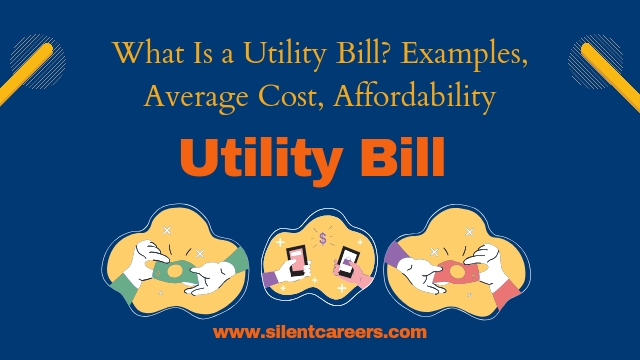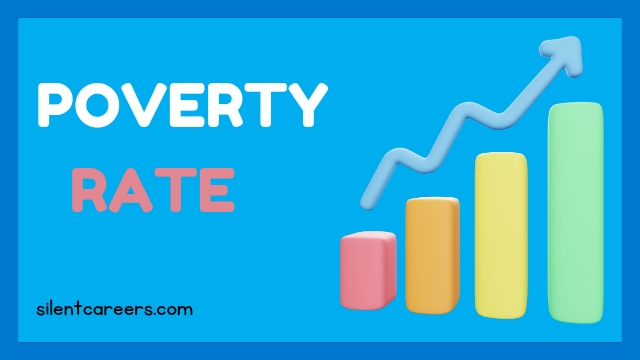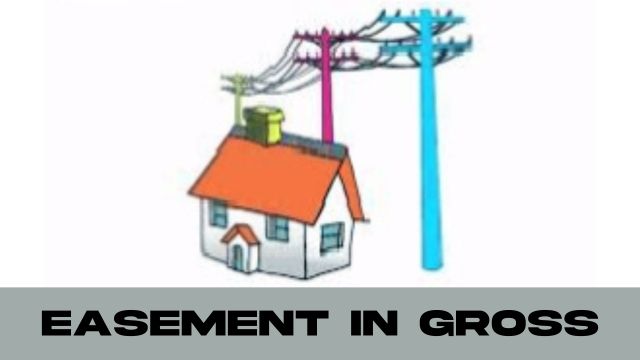
WFDS stands for Wells Fargo Dealer Services, now known as Wells Fargo Auto, providing auto loans and leases through dealerships. It reports to credit bureaus, affecting credit reports and scores.

What is WFDS on my credit report? | Wfds Meaning
WFDS on your credit report stands for Wells Fargo Dealer Services. It typically appears when you have or had an auto loan or lease financed through Wells Fargo’s auto lending division. Wells Fargo Dealer Services provides financing options for car buyers through dealerships, meaning if you financed a vehicle purchase through a dealer and they used Wells Fargo for the loan, this entry would show up on your credit report.
Here’s what the presence of WFDS on your credit report might indicate:
- Auto Loan or Lease: It shows that you have an active or past auto loan or lease with Wells Fargo Dealer Services. The entry would include details about the loan, such as the loan amount, payment history, current balance, and the status of the account (open, closed, paid off, etc.).
- Credit Impact: Like any other installment loan, your auto loan from WFDS affects your credit report and score. Making timely payments will have a positive impact, while late payments or defaults will negatively affect your credit score.
- Account Details: The WFDS entry will also display information like the date the account was opened, the loan amount, monthly payment amounts, and any late payments or delinquencies.
If WFDS appears on your credit report and you are unsure why it is there or believe it is an error, you may want to contact Wells Fargo Dealer Services directly or dispute the entry with the credit bureaus.
How can WFDS affect your credit score?
WFDS (Wells Fargo Dealer Services) can affect your credit score in several ways, depending on how you manage your auto loan or lease account. Here’s a breakdown of how this entry on your credit report can influence your credit score:
1. Payment History
- Positive Impact: If you make all your payments on time, it positively affects your credit score. Payment history is the most significant factor in determining your credit score, accounting for about 35% of the total score in most scoring models. Consistently paying on time shows that you are a reliable borrower, which can help improve your score over time.
- Negative Impact: Late payments, missed payments, or defaults on your WFDS loan will negatively impact your credit score. These negative marks can stay on your credit report for up to seven years, significantly lowering your score.
2. Credit Mix
- Having a diverse mix of credit accounts, such as credit cards, mortgages, and installment loans (like an auto loan from WFDS), can positively impact your credit score. This is because a varied credit mix shows lenders that you can handle different types of credit responsibly. Credit mix accounts for about 10% of your credit score.
3. Length of Credit History
- Positive Impact: If you’ve had your WFDS account for a while, it can positively contribute to the length of your credit history. The average age of your accounts is a factor in your credit score, with older accounts being more beneficial.
- Negative Impact: If your WFDS loan is relatively new, it could temporarily lower your average account age, slightly affecting your score until the account ages further.
4. Amounts Owed (Credit Utilization)
- Although credit utilization ratio typically refers to revolving credit accounts (like credit cards), the amount owed on installment loans like auto loans is also considered. Owing a high balance on your WFDS loan, relative to the original loan amount, could be viewed as higher risk, but the impact is usually less significant compared to revolving credit.
5. New Credit Inquiries
- When you apply for an auto loan through WFDS, a hard inquiry is typically made on your credit report. Hard inquiries can temporarily lower your credit score by a few points, though the impact diminishes over time. However, if you have multiple inquiries within a short period, especially for different types of credit, it could indicate higher risk to lenders and further lower your score.
6. Account Status
- Open and Current: An open and current account in good standing with WFDS (no late payments, no defaults) will generally have a positive impact on your credit score.
- Closed and Paid Off: Once you pay off your WFDS loan, the account will be marked as closed. A closed account in good standing will still positively affect your credit history, showing successful debt repayment.
- Delinquent or Defaulted: An account marked as delinquent or defaulted will significantly damage your credit score. The impact will be substantial, as it indicates to lenders that you have failed to meet your financial obligations.
Overall, how WFDS affects your credit score depends largely on your payment behavior and how you manage the account. Responsible handling of your WFDS loan by making timely payments and eventually paying off the loan will positively affect your credit score. On the other hand, late payments, missed payments, or defaulting on the loan will negatively impact your score.
Why does WFDS appear on your credit report?
WFDS (Wells Fargo Dealer Services) appears on your credit report primarily because you have an auto loan or lease financed through Wells Fargo Dealer Services. Credit reports are comprehensive records of your borrowing history and current credit obligations, and they include details from any creditor you have a financial relationship with, including WFDS.
Here’s why WFDS might appear on your credit report:
1. Auto Loan or Lease Account
- Active Loan or Lease: If you currently have an active auto loan or lease with Wells Fargo Dealer Services, this account will appear on your credit report. The report will include details such as the loan amount, monthly payment, outstanding balance, payment history, and the status of the account (e.g., current, delinquent, closed).
- Paid-Off Loan: Even if you have paid off your WFDS auto loan, it will still appear on your credit report for up to 10 years as a closed account in good standing, depending on the credit reporting policies of the credit bureau.
2. Credit Inquiries
- Hard Inquiry: When you apply for an auto loan through WFDS, a hard inquiry is usually performed as part of the loan approval process. A hard inquiry will show up on your credit report and can temporarily lower your credit score. This inquiry will remain on your credit report for up to two years, although its impact on your score diminishes over time.
3. Payment History
- Payment Tracking: WFDS reports your payment history to the credit bureaus to reflect whether you are making payments on time or if there have been any late or missed payments. This information is vital for your credit report, as payment history is a significant factor in calculating your credit score.
4. Account Status and Updates
- Regular Updates: WFDS regularly updates credit bureaus with the current status of your loan or lease, including any changes to the balance, the status of payments (on time, late, delinquent), and the closure of the account. These updates help ensure that your credit report reflects your current credit behavior.
5. Loan Servicing Transfer
- Transfer of Servicing Rights: In some cases, an auto loan might be transferred from one lender to another, and if WFDS acquires the servicing rights for your loan, it would appear on your credit report. This would happen if your original auto loan was with a different lender, but WFDS took over servicing the loan.
6. Identity Verification
- Confirming Borrower’s Identity: WFDS appearing on your credit report can also help lenders verify your identity and prevent fraudulent activity. If you notice WFDS on your credit report and you did not take out an auto loan or lease with them, it could be a sign of identity theft, and you should investigate further.
WFDS appears on your credit report because of your financial relationship with Wells Fargo Dealer Services, usually through an auto loan or lease. The presence of WFDS helps creditors assess your creditworthiness based on your borrowing history and repayment behavior. If WFDS appears on your credit report and you do not recognize it, you should contact WFDS and the credit bureaus to investigate and resolve any potential errors or fraudulent activity.
Read more: How to Build Credit: Tips and Tricks for a Better Credit Score
How to remove WFDS from my credit report
To remove WFDS (Wells Fargo Dealer Services) from your credit report, you need to determine why it appears there and take appropriate steps based on the specific situation. Here’s a guide on how to approach the removal process:
1. Verify the Accuracy of the Information
- Review Your Credit Report: Obtain a copy of your credit report from all three major credit bureaus (Equifax, Experian, and TransUnion) to check for any discrepancies. You are entitled to a free report from each bureau once a year via AnnualCreditReport.com.
- Check for Errors: Look closely at the WFDS entry to ensure all the information is accurate, including the account number, balance, payment history, and account status.
2. Determine the Reason for Removal
- Incorrect Information or Error: If the WFDS entry contains incorrect information or errors (such as incorrect payment history, balance, or account status), you have the right to dispute the error with the credit bureaus.
- Fraud or Identity Theft: If you do not recognize the WFDS account or believe it is fraudulent, you need to take steps to address potential identity theft.
- Legitimate Account but Want Removal: If the account is valid and correctly reported but you wish to remove it, note that legitimate accounts that are correctly reported cannot be removed from your credit report. However, you can try to negotiate with WFDS if there are late payments or negative marks you want removed.
3. Dispute the WFDS Entry with Credit Bureaus
- File a Dispute: If you find an error in the WFDS entry, file a dispute with the credit bureaus where the error appears. You can typically file disputes online, by mail, or by phone. Include supporting documentation that demonstrates why the information is incorrect.
- Provide Details: Clearly explain why you believe the WFDS entry is incorrect and provide copies of any relevant documentation, such as account statements or correspondence with WFDS.
- Credit Bureau Investigation: The credit bureau will investigate the dispute by contacting WFDS. WFDS is required to review their records and respond to the credit bureau within 30 days.
4. Contact WFDS Directly
- Reach Out to WFDS: Contact Wells Fargo Dealer Services directly if you notice any incorrect information on your credit report. They may be able to resolve the issue more quickly than going through the credit bureaus.
- Request Proof of Debt: If you suspect identity theft or an unauthorized account, ask WFDS to provide proof of the debt. If they cannot provide adequate proof, request that they remove the entry from your credit report.
5. Remove Fraudulent Accounts
- Report Identity Theft: If the WFDS entry is fraudulent, report it to the Federal Trade Commission (FTC) at IdentityTheft.gov and create an identity theft report.
- Place a Fraud Alert: Contact one of the major credit bureaus to place a fraud alert on your credit report. This alert informs creditors to take extra steps to verify your identity before opening new accounts.
- Freeze Your Credit: Consider placing a credit freeze on your report, preventing new credit accounts from being opened in your name without your consent.
- Police Report: File a police report regarding the identity theft. Provide this report to WFDS and the credit bureaus as part of your dispute.
6. Request a Goodwill Adjustment
- Goodwill Letter: If the WFDS account is legitimate, and there are late payments or other negative marks that you would like removed, consider writing a goodwill letter to WFDS. In the letter, explain why the negative marks occurred (e.g., temporary financial hardship) and request a goodwill adjustment to remove them from your credit report.
- Positive Payment History: Emphasize any positive payment history you have with WFDS and explain why you are asking for this adjustment (such as trying to qualify for a mortgage).
7. Wait for the Results
- Credit Bureau Response: After you submit a dispute, the credit bureau has 30 days to investigate and respond. If they find the information is inaccurate, they will remove or correct the entry.
- Review Updated Credit Report: Once the dispute is resolved, check your credit report again to ensure the WFDS entry has been corrected or removed as necessary.
Removing WFDS from your credit report depends on whether the information is accurate or not. If it’s an error or fraud, you can dispute the entry with the credit bureaus and WFDS. If it’s a legitimate entry, it will remain on your credit report until it falls off naturally after 7-10 years, depending on the type of account and its status. For negative marks that are accurate, you can try requesting a goodwill adjustment from WFDS, although this is at their discretion and not guaranteed.
Monitor your credit
Monitoring your credit is an important step in maintaining your financial health and protecting yourself from identity theft or fraud. Here’s a comprehensive guide on how to effectively monitor your credit:
1. Check Your Credit Reports Regularly
- Obtain Free Credit Reports: You are entitled to a free credit report from each of the three major credit bureaus (Equifax, Experian, and TransUnion) once every 12 months through AnnualCreditReport.com. Reviewing your credit reports regularly helps you identify any errors or unauthorized activity.
- Stagger Your Requests: To monitor your credit throughout the year, consider staggering your requests for free credit reports. For example, you can request a report from one bureau every four months.
2. Use Credit Monitoring Services
- Sign Up for Credit Monitoring: Many services offer credit monitoring for a fee, while some are free. These services alert you to changes in your credit report, such as new accounts opened in your name, inquiries, or changes in account status.
- Select a Reliable Service: Look for credit monitoring services that provide alerts for changes across all three credit bureaus, as well as additional features like identity theft insurance or credit score tracking. Some popular services include Experian, TransUnion, Equifax, Credit Karma, and MyFICO.
3. Set Up Fraud Alerts
- Place a Fraud Alert: If you suspect you are a victim of fraud or identity theft, you can place a fraud alert on your credit report. A fraud alert notifies potential creditors to take extra steps to verify your identity before opening new accounts. You only need to contact one of the three credit bureaus to set up a fraud alert, and they will notify the other two.
- Extended Fraud Alerts: For victims of identity theft, an extended fraud alert can be placed on your credit report for up to seven years. This provides additional protection and ensures that any new credit applications are carefully vetted.
4. Use Credit Freezes
- Freeze Your Credit: A credit freeze restricts access to your credit report, making it difficult for identity thieves to open new accounts in your name. You must contact each of the three credit bureaus separately to initiate a credit freeze. You can temporarily lift or remove the freeze whenever necessary, such as when applying for new credit.
- Monitor Frozen Accounts: Even with a credit freeze, continue to monitor your existing accounts for any suspicious activity. Credit freezes do not prevent fraud on existing accounts or prevent identity thieves from using your personal information for non-credit-related activities.
5. Review Your Credit Scores Regularly
- Check Your Credit Scores: Regularly monitoring your credit scores can help you track changes over time and identify potential issues. Many credit card companies and financial institutions offer free credit score tracking as part of their services. Alternatively, you can use free services like Credit Karma or pay for scores from FICO or VantageScore.
- Understand Score Changes: Be aware of what factors can affect your credit score, such as payment history, credit utilization, length of credit history, types of credit accounts, and recent inquiries. Understanding these factors can help you maintain or improve your credit score.
6. Stay Informed About Data Breaches
- Monitor News for Breaches: Pay attention to news about data breaches that could affect your personal information. If a breach occurs, take immediate steps to protect yourself, such as changing passwords, monitoring your accounts closely, and placing fraud alerts or credit freezes if necessary.
- Utilize Free Credit Monitoring Offers: Companies involved in data breaches sometimes offer free credit monitoring services for affected customers. Take advantage of these offers to ensure you are alerted to any unusual activity on your credit reports.
7. Check Your Financial Accounts Regularly
- Monitor Bank and Credit Card Accounts: Regularly review your bank and credit card statements for any unauthorized transactions. Promptly report any suspicious activity to your financial institution to prevent further unauthorized use and limit potential damage.
- Set Up Account Alerts: Most financial institutions offer alerts for transactions, low balances, or unusual activity. Set up these alerts to stay informed about your account activity and detect any issues early.
8. Protect Your Personal Information
- Be Cautious with Personal Information: Protect your Social Security number, account numbers, and other sensitive information. Only share personal information when absolutely necessary and ensure you are using secure methods.
- Use Strong Passwords and Two-Factor Authentication: Create strong, unique passwords for all your financial accounts and enable two-factor authentication wherever possible. This adds an extra layer of security, making it more difficult for fraudsters to access your accounts.
Monitoring your credit is crucial for maintaining financial health and preventing identity theft. By regularly checking your credit reports, using credit monitoring services, setting up fraud alerts or credit freezes, and taking other proactive steps, you can protect your credit and quickly address any issues that arise. Staying vigilant and informed is key to safeguarding your credit profile.
WFDS bank
WFDS stands for Wells Fargo Dealer Services, which is the auto financing division of Wells Fargo Bank. WFDS provides auto loans and leases to customers through a network of automobile dealerships across the United States.
Key Points about WFDS (Wells Fargo Dealer Services):
- Auto Financing:
- WFDS specializes in offering auto loans and leases. These services are typically provided when you purchase a vehicle through a dealership that works with Wells Fargo.
- Customers make regular payments on their auto loans or leases directly to Wells Fargo Dealer Services.
- Credit Reporting:
- WFDS reports to the major credit bureaus, which is why it may appear on your credit report if you have an auto loan or lease with them.
- The appearance of WFDS on your credit report reflects your payment history, account balance, and the status of the loan.
- Account Management:
- Customers can manage their auto loans online through the Wells Fargo Dealer Services website, where they can make payments, view statements, and manage their accounts.
- Transition to Wells Fargo Auto:
- In recent years, Wells Fargo has rebranded its auto financing division from Wells Fargo Dealer Services to Wells Fargo Auto. However, the services and operations remain largely the same under the new branding.
- Contact and Support:
- If you have an auto loan with WFDS or Wells Fargo Auto, you can reach customer service through their official website or by calling their customer service hotline for account-related inquiries.
Conclusion
WFDS, or Wells Fargo Dealer Services, is now known as Wells Fargo Auto and provides auto loans and leasing options through a network of dealerships. As part of Wells Fargo Bank, it is a major player in the auto financing market, and its accounts are reported to credit bureaus, which is why they may appear on credit reports.








